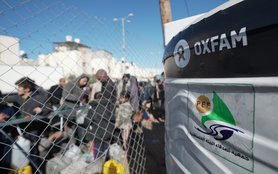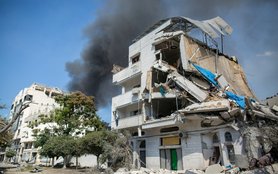Northern Mali will descend to emergency levels of food insecurity in less than two months if the security situation and humanitarian access to vulnerable communities do not improve, warned four international aid organizations today following the analysis of experts from the Harmonised framework.
According to Harmonised, as many as two thirds of people from the three northern regions of Mali (Gao, Timbuktu and Kidal) are already living in crisis levels of food insecurity, and some parts of Kidal are already at emergency levels.
Markets surveys carried out recently by Action Against Hunger (ACF), Solidarités International, Welthungerhilfe and Oxfam, operating in these regions, show that prices for some basic foods have spiralled since January 2013, increasing by up to 36 percent in the Gao region, 30 pe cent in the Timbuktu region, and 25 percent in the Kidal region. In Kidal, an area where 94 percent of households have to buy their food from local markets, two thirds of the traders who would normally supply the markets have left and trade flows of cereals have fallen by 60 percent. The markets of Timbuktu and Goundam are also not well supplied with staples.
The ‘lean’ season – when food stocks run low before the next harvest – has started early this year. Herders have not been able to use traditional pastures and water points. At the same time, the value of livestock, particularly cattle and goats, has fallen, making it even harder for pastoralists to buy enough cereals. Alternative employment opportunities are rare and daily labour wages have fallen. In Gao, a day’s work earned about $2.50 this time last year, but today that figure stands at between $1.50 and $2.00, affecting households' purchasing power.
This worrying situation is mainly due to the consequences of the conflict – including roads being closed or inaccessible, the closure of the Algerian border, and the departure of many traders – added to poor production systems and poor agricultural infrastructure, predating the crisis.
“While international attention is focused on the UN peacekeeping mission, we risk losing sight of the current alarming humanitarian situation. Parents are already skipping meals in order to feed their children. People in the north will not be able to find enough food to feed their families through the months ahead before the next harvest,” said Philippe Conraud, Oxfam Country Director in Mali. “It is vital that we act before the food situation reaches a point of no return.”
According to the Harmonised Framework, the humanitarian assistance planned to date will not cover all the needs. This is due to several priority areas being critically underfunded. As of April 24, 2013, the UN emergency appeal for Mali had only received $106 million of the full amount. There are also difficulties accessing some areas due to the presence of armed groups; operations by Malian, African and French forces; banditry; and the presence of mines and other non-exploded ordinance.
Action Against Hunger (ACF), Solidarités International, Welthungerhilfe and Oxfam are calling on the international community and donors to scale up assistance to the most vulnerable. The four organizations recommend scaling up assistance on food, livelihoods, water and sanitation, nutrition, protection and improvement of access to water and health, and resilience building.
Notes:
- The five phases of food insecurity according to the Harmonised Framework are: Phase 1: Minimal food insecurity; Phase 2: Stressed; Phase 3: Crisis; Phase 4: Emergency; Phase 5: Famine.
- The Permanent Interstate Committee for Drought Control in the Sahel (Comité permanent Inter-Etats de Lutte contre la Sécheresse dans le Sahel, CILSS) developed the Harmonised Framework (Cadre Harmonisé) in the early 2000s. It is mandated to analyse the food security situation. Action Against Hunger, Solidarités International, Welthungerhilfe and Oxfam participated in the Harmonised Framework meetings in Bamako in late March 2013. Around 40 stakeholders were involved in the meetings including government, civil society, non-governmental organisations and international agencies. Experts analysed current data on food security and produced maps on current situation and projected situation in June 2013 .
- Between 26 to 65 percent of the population, depending on the regions in northern Mali, are currently under threat of crisis levels of food insecurity according to the Harmonised Framework.
- Underfunded priority sectors are food security and livelihoods, water, sanitation, hygiene, protection, education and health and support to livelihoods. The Consolidated Appeal Process (CAP) for Mali is only funded at $106 million of the total $410 million requested, while $90 million has contributed to projects outside this Appeal.


